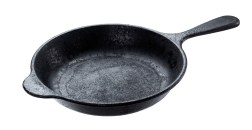Single Beds vs. Twin Beds: Which is Right for You?
When it comes to choosing the right bed for your bedroom, there are several factors to consider. One of the most important decisions you’ll have to make is whether to go with a single bed or a twin bed. While these terms are often used interchangeably, they actually refer to two different types of beds. In this article, we will explore the differences between single beds and twin beds and help you determine which one is right for you.
Size and Dimensions
The main difference between single beds and twin beds lies in their size and dimensions. A single bed typically measures 36 inches wide by 75 inches long, making it an ideal choice for children or smaller bedrooms. On the other hand, a twin bed is slightly larger, measuring 39 inches wide by 75 inches long. This additional width can provide more comfort for taller individuals or those who prefer extra space while sleeping.
Versatility and Functionality
Another aspect to consider when choosing between single beds and twin beds is their versatility and functionality. Single beds are often seen as more versatile due to their smaller size. They can easily fit into tight spaces or shared rooms without taking up too much room. Single beds are also great options for guest rooms or dormitories where space may be limited.
Twin beds, on the other hand, offer more functionality in terms of accommodation options. They are commonly used in children’s bedrooms as they can comfortably sleep one child but also allow for sleepovers with friends or siblings. Twin beds can easily be transformed into bunk beds or paired with trundle units to maximize sleeping arrangements in a small space.
Bedding Options
When it comes to bedding options, both single beds and twin beds offer a wide range of choices. However, due to its slightly larger size, twin bedding tends to be more readily available compared to single bedding. This means that finding the perfect sheets, comforters, and blankets for a twin bed may be easier than for a single bed.
Single beds, on the other hand, offer the advantage of being more cost-effective when it comes to purchasing bedding. Since they are smaller in size, single bedding sets are often cheaper than twin bedding sets. This can be a significant factor to consider if you’re on a tight budget or looking to save some money.
Age and Height Considerations
Finally, it’s important to consider age and height when deciding between single beds and twin beds. Single beds are typically more suitable for children or shorter individuals due to their compact size. However, if you’re taller or have specific sleep preferences that require extra room, a twin bed might be a better option.
Twin beds can accommodate individuals of various heights comfortably and are often preferred by teenagers or young adults who need more space while sleeping. Additionally, twin beds can provide better support for taller individuals as they offer more room for stretching out without feeling cramped.
In conclusion, the choice between single beds and twin beds ultimately depends on your specific needs and preferences. If you’re looking for a compact and versatile solution that fits into smaller spaces or shared rooms, a single bed may be the right choice for you. On the other hand, if you require more sleeping options or additional space while sleeping, a twin bed might be the better option. Consider your room size, desired functionality, available bedding options, and personal requirements before making your final decision.
This text was generated using a large language model, and select text has been reviewed and moderated for purposes such as readability.





